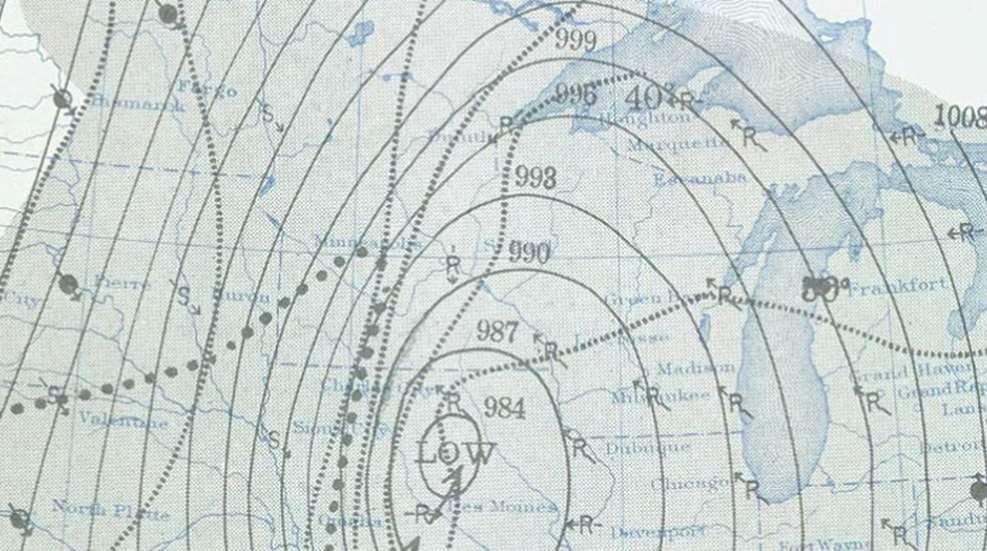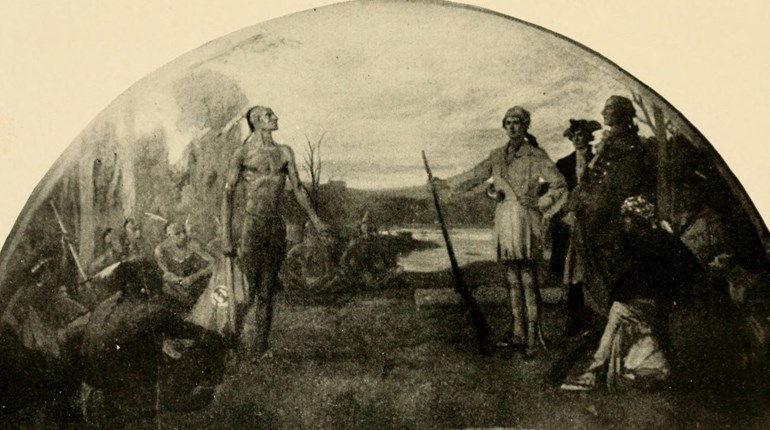
The Upper Midwest is known for its sudden and severe weather changes, especially during spring and fall. But no one, not even veteran outdoorsmen, had ever experienced what happened on November 11, 1940. Officially, it was named the Armistice Day Storm (Blizzard). Unofficially, it became known as “The day the duck hunters died.”
Across half a dozen states 159 people perished, possibly more. In Minnesota alone, half of those who died were waterfowl hunters. This is their story.
November 11 was a Monday, but not a typical start to the work week. Ever since 1918, it had been designated Armistice Day (today known as Veterans Day), marking the end of World War I. As it was a holiday, kids were home from school and adults had taken the day off work. Many sportsmen chose to skip the traditional parades and speeches and instead go hunting—waterfowl hunting.
They set their decoys in the pre-dawn darkness in practically shirt-sleeve weather. So far, autumn had been unusually mild, with temperatures in the 50s and 60s and many sunny, bluebird days. A slight wind rippled the water that fateful morning, but nothing portended what was to come during the next few hours.
About mid-morning it started to rain, then the precipitation abruptly turned to sleet, then snow. The balmy temperatures dropped like a head-shot mallard, plunging to just 10 degrees in a matter of hours. The wind built to 20, 30, then 40 miles per hour, sustaining at 50 miles per hour or even stronger. Some gusts were recorded in excess of 80 miles per hour.
Barometric pressure in LaCrosse, Wisconsin, dropped to an all-time low, as it did in Duluth, Minnesota—971 millibars. Up to 26 inches of snow fell; driven sideways by the incessant winds off the prairies, it piled up in huge drifts.
Known meteorologically as an “extratropical cyclone,” it was the perfect storm at the worst possible time for the thousands of hunters caught in marshes, lakes and along rivers. Unbeknownst to them, they were now facing an unprecedented inland hurricane that was in the process of cutting a 1,000-mile-wide swath of death and destruction from Kansas to Michigan.
On the eastern edge of the storm, members of the exclusive Point Mouillee Shooting Club were duck hunting in the Lake Erie marshes of southeast Michigan. Guide Ed Lezotte remembered, “We were all very lucky to make it back to the clubhouse…it was the worst day I’d ever seen on the marsh.”
The area along the Upper Mississippi River between Minnesota and Wisconsin was the hardest hit. The river there is a two-mile-wide wilderness of islands, oxbows and sloughs, in essence waterfowling heaven. But on this particular day, it became duck hunters’ hell.
In his 1982 book titled, Where The Sky Began: Land of the Tallgrass Prairie, the late John Madson wrote of the hunters and blizzard, “Caught by the storm with little warning, they drowned as they tried to reach land, or stayed in their duck blinds as waves tore them apart, or simply died of exposure that night on the river islands, out of reach of help.” Madson said that 85 duck hunters perished in Minnesota, Wisconsin and Illinois alone.
Gone hunting that morning was 17-year-old Gerald Tarras and a teenage friend. The pair accompanied Gerald’s father, brother and a black Labrador retriever. For several hours, the waterfowl hunting was nothing short of fantastic, the best the boys had ever experienced. Ducks and geese dove into the decoys with abandon, seeking shelter from the ever-increasing winds.
But by late afternoon the hunting was all but forgotten. Even though the ducks kept piling into the decoys, the hunters were no longer concerned with shooting. Lowering their guns, the older men looked at each other and instinctively knew they were now in a battle for their very lives.
This was in the days long before Gore-Tex and other waterproof outdoor clothing. Most of the hunters were dressed in light canvas hunting coats and caps that shed water for a short time but soon became waterlogged, offering little warmth. Gerald’s friend was the first of the hunting party to die of exposure (hypothermia), at about 2:00 the next morning. Gerald’s brother lasted until 11:00 a.m.; his father passed away about 2:00 p.m.
There were many memorable rescues and rescuers following the storm, but no hero deserves more accolades than Max Conrad. A pilot, Conrad continually flew his Piper Cub up and down the icy shores of the Mississippi River the next day (November 12) searching frantically for survivors of the storm. If he found hunters alive, they were usually huddled behind a duck boat, turned on its side to break the wind, which was now thankfully subsiding.
Conrad would circle low over the hunters, cut the plane’s engine and yell out the window, “Hang on, help is coming!” He’d then toss down a waterproof container filled with sandwiches, matches, whiskey and cigarettes. Conrad continued circling the hunters until one of the many rescue boats on the river spotted him and responded.
Max Conrad stayed airborne, searching for stranded hunters, until well after dark. He was back flying over the river again the next morning at first light, no doubt saving many lives. One of the duck hunters he saved was Gerald Tarras. The young man was found huddled against a stump, clinging to the black Lab for warmth, both of them just barely alive.
Duck hunters were not the only people to perish in the Armistice Day Storm of 1940. Some 66 sailors died on the Great Lakes, going down in three freighters—SS Novadoc, SS William B. Davock and SS Anna C. Minch—as well as at least two smaller ships.
Livestock also died by the tens of thousands. An estimated 1.5 million domestic turkeys perished in the blizzard. Intended for Thanksgiving Day dinner tables, farmers were forced to sell the birds early for as little as 25 cents each, advertising them as “fresh frozen.”
Note: If you’d like to read more about the Armistice Day Storm of 1940, pick up a copy of William H. Hull’s book, All Hell Broke Loose. Forty-five years after the storm, Hull interviewed more than 500 survivors about their experiences, then selected 167 accounts to include in his popular book, now in its 18th printing.





































